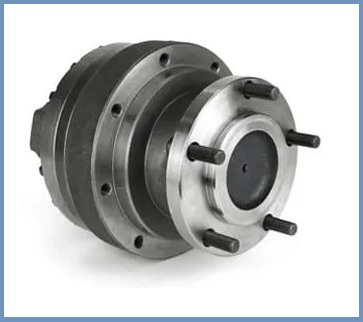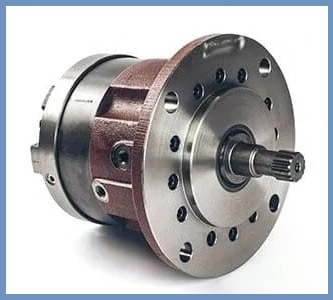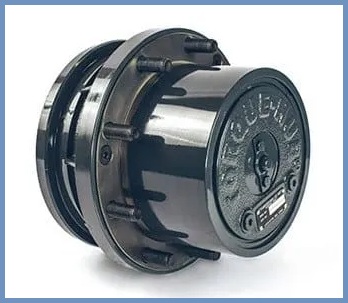The planetary gearbox is equipped with two gears (that is, input and output gears), one of which rotates around the center of the other gear. The carrier helps connect the center of the input and output gears. This carrier rotates to rotate one gear called a planetary gear and the other gear called sun gear.
The planetary gears mesh with the sun gears so that the pitch circle can roll without slipping. The marks on the pitch circle of the planetary gears indicate the planetary curve. In this system, the sun gear is fixed and the planetary gear is movable. This planetary gear rotates around the sun gear.

Planetary gears can be mounted so that these gears rotate within a fixed-pitch circle of external ring gears. In this case, the curve through the point or symbol on the pitch circle of the planetary gear is a hypocycloid. Bicycle gas hubs are a good example of planetary gears. These gearboxes can also be used in combination with hydraulic motors, electric motors, or internal combustion engines to improve efficiency, durability, and the ability to control heavy loads.
Table of Contents
How Does Planetary Gearbox Work?
The planetary gear design is relatively simple and includes a central sun gear, an outer ring (also known as an internal gear because the teeth are facing inward), a carrier, and a planetary gear. The input power to the sun gear causes the sun gear to rotate. There is a standard for the meshing of planetary gears and sun gears, and when the sun gears rotate based on this, the planetary gears rotate along their axes.
The planetary gear is also proportional to the fixed ring part, and the planetary parts rotate around the sun gear. The carrier keeps the planetary gear in its basic shape and adjusts the gap. It rotates with the planetary part and holds the output axis.
With planetary gears, many teeth work at the same time, with relatively small gears decelerating at high speeds, reducing the inertia reflected by the system. Due to the load distribution across several teeth, the planetary component can also transmit high torque. The combination of large reduction ratios, compact size, and high torque capacity makes planetary gearheads a popular option in space-constrained applications.
Types of Planetary Gearbox
- Spindle Output
- Shaft Output
- Wheel Drive
Let’s have a look at types of planetary gearbox.
1. Spindle Output
Planetary gears with spindle outputs are designed with outputs as flanges but behave like shaft outputs. The spindle drive planetary type can be used in applications with torques up to 113,000 Nm.

2. Shaft Output
In the shaft output gearbox, the sun gear drives the coupled planetary components that are connected to the rotating carrier of the gearbox. The ring portion is secured via a rotary screwdriver that transmits the driving force to the shaft. The system body is directly connected to the machine and the output end is the axis of rotation.

3. Wheel Drive
In this type of planetary gear, the sun gear drives the surrounding planetary components. These components are connected to the planetary gear carriers. When the sun gear starts to rotate, the planetary gear rotates around the outer ring gear. The wheels can be mounted on the system chassis. You can optimize the size of your system by connecting the wheels directly to the gearbox.

Thanks for reading my article on Planetary Gearbox. If you have any thoughts, hit the comment box.
Thanks!
Happy Learning!
Ta! Da!
